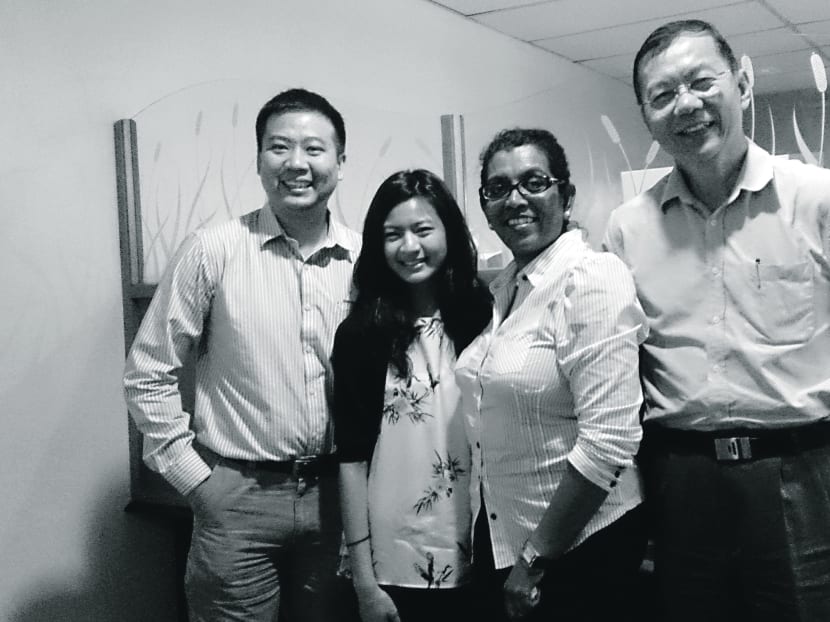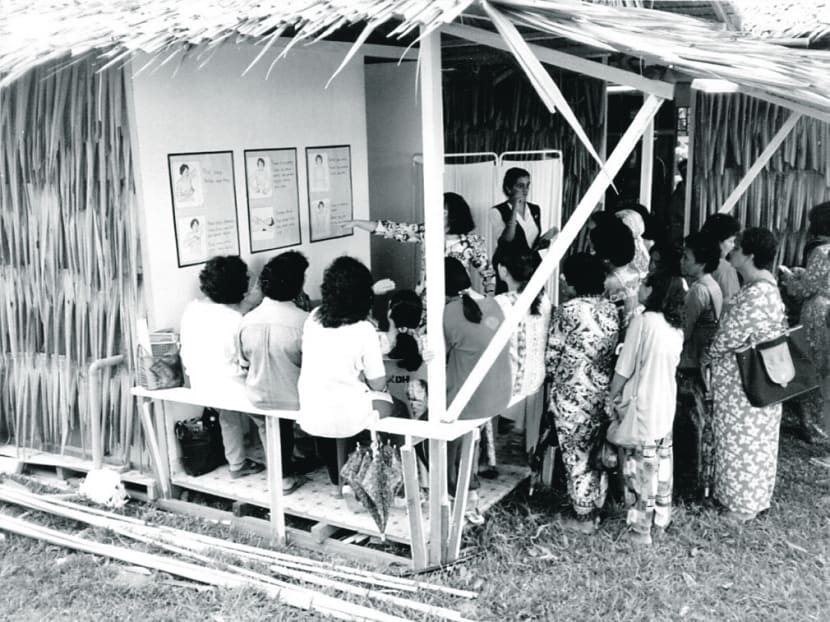Cancer control on a shoestring budget
In 1993, a visibly agitated Beena Devi, Singaporean cancer specialist, looked in the mirror and asked herself: “Why are patients coming to the hospital so late? Don’t they know something is wrong? Maybe they believe nothing could be done?” As she explained: “I knew I wouldn’t be seeing many patients much longer.”


In 1993, a visibly agitated Beena Devi, Singaporean cancer specialist, looked in the mirror and asked herself: “Why are patients coming to the hospital so late? Don’t they know something is wrong? Maybe they believe nothing could be done?” As she explained: “I knew I wouldn’t be seeing many patients much longer.”
She decided that something had to be done. Fresh from Singapore and a newcomer to the Sarawak General Hospital’s Department of Radiotherapy, she found an able partner in Dr Tang Tieng Swee — a medical physicist with a PhD from London, who was a savvy local whose skilled organisational talents proved the perfect complement to Dr Beena’s passion and clinical expertise.
Working with a small team of like-minded clinicians and hospital managers, they patiently went about educating community nurses and medical assistants on early symptoms of cancer. They focused on breast, cervical and nasopharyngeal cancers, going deep into rural areas to ensure that they were reaching everyone.
Why not mammographic screening or Pap smears like what is done in advanced countries like Singapore? One word: Money.
Breast self-examination may not be as “accurate” as mammography but it is easy to teach, easy to perform — and, as the results amply demonstrate, can contribute to women seeking medical attention earlier. Best of all, it costs hardly anything for the women and the system.
ADVANCED CANCER RATES PLUMMET
Scrupulous data collection over two decades enabled the team to demonstrate that cancer stage at diagnosis had plummeted.
In 1991, 70 per cent of breast cancer patients came to the hospital with advanced disease; by 1999 this had dropped to under 40 per cent.
For cervical cancer, the rates of late diagnosis dropped from 70 per cent to under 30 per cent.
Education is not rocket science. Why did Dr Beena succeed when so many others had failed? A few crucial factors.
Firstly, Drs Beena and Tang had very astutely identified the point of maximum leverage.
As Dr Tang explained: “In rural clinics, the MAs (medical assistants are the male equivalent of nurses in Malaysia) and nurses are like resident doctors. Villagers see them for everything. But they lacked awareness and sometimes wouldn’t know how to handle what are actually symptoms of cancer. So us going into the field to improve their skill and knowledge made them happier and feel empowered.”
The MAs and nurses actually lived in the villages and knew the villagers well, he added. The greater sense of ownership, greater rapport and enthusiasm were critical.
NEED A DOC? CALL ME
Secondly, the hospital team mapped the entire “value chain” and systematically cleared roadblocks and rectified deficiencies. In particular, Drs Beena and Tang found early on that they would have to rectify the referral system in order for the programme to really work.
“You see, previously referrals could only be done by doctors. Even if we trained someone in a rural area, they still could not refer patients. So we got permission from the State Health Department for nurses and MAs to refer patients with cancer symptoms to the nearest hospital,” said Dr Tang.
What if there are doctors in the intervening district hospital fobbing off the nurses’ referrals? “No problem”, said Dr Beena. “The nurses and MAs could call me directly. After a while, everyone knew to take the nurses and MAs seriously.
“When your referrers are discouraged, they don’t bother any more and give up. The whole programme becomes a waste of effort. We needed to give them the assurance that we would also be there for them.”
The team also made sure waiting times for specialist attention were also kept short so that patients were reassured that being diagnosed early made a difference.
In fact, Sarawak has “one of the shortest waiting lists in the country — where new patients only need to wait about three to four weeks”, according to hospital director Abdul Rahim Abdullah.
Dr Beena explained: “The department had to work and continues to work really hard, but we have a great team. Very motivated; they can see it makes a difference.”
GOING TO THE MOST VULNERABLE
A third factor was the “localisation” of education materials and methods. Foregoing precise medical terminology which rural folk would not understand or connect with, the team instead produced materials customised to local norms.
Finally, the team went where the most vulnerable are. Not for the team were the comforts of a modern hospital, and getting rural paramedical staff to make the long journey to the hospital. Instead, heading out on fishing boats and crossing rickety bridges, they went to where the villagers were.
This was crucial for two reasons, Dr Tang said: “We showed the villagers we were serious and, just as importantly, we could teach the nurses and medical assistants by actually demonstrating how to do a breast self-examination or Pap smear.”
There is still much work to be done. Dr Beena remains troubled by a persistent 12 per cent of Stage IV breast cancers. “We are still not reaching every woman,” she said.
How much did all this cost? A mere US$9,250 (S$11,730) a year! (US$8,000 for staff training, mainly travel costs for hospital faculty; and another US$1,250 for printing of pamphlets and other educational materials).
Reporting their work in the Annals of Oncology, Drs Beena and Tang concluded: “Educating women empowers them to self-care and gives them the opportunity to seek treatment earlier. In countries with limited financial and manpower resources, down-staging of cancers is a cost-effective way of tackling the problem of cancer burden.”
ABOUT THE AUTHORS:
Dr Jeremy Lim is a Founding Member of the ASEAN Non-Communicable Diseases (NCD) Network and Fatimah Z Alsagoff is with its Secretariat. The Network is an informal grouping of healthcare experts with a shared passion and commitment to improving care for NCDs in South-east Asia.
This is part of a series on healthcare innovations in ASEAN.






